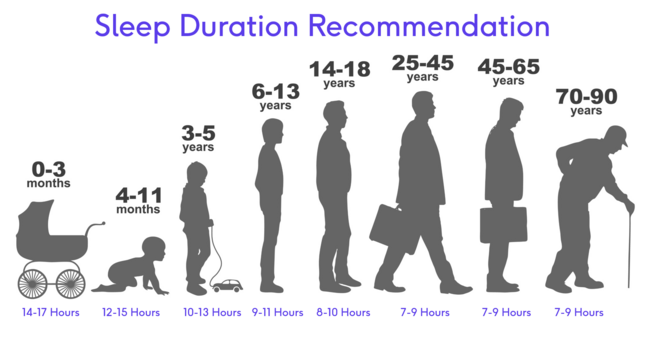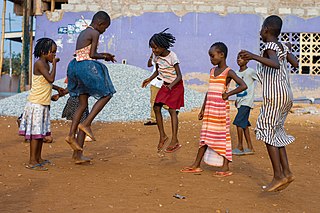Holistic Healthcare Interventions for Children: Difference between revisions
No edit summary |
No edit summary |
||
| Line 142: | Line 142: | ||
==== Pillar 3: Movement ==== | ==== Pillar 3: Movement ==== | ||
[[File:KidsplayingPP.jpg|left|thumb|320x320px]] | |||
It is important for children to have movement time. Research<ref name=":7">https://extension.psu.edu/movement-builds-a-childs-brain</ref> shows a link between movement and cognitive development. Play experiences and new movement facilitates brain development and maintain neural connections. Limited activity can decrease brain cell connections. Coordination drills utilizing both the left and right sides of the brain facilitate communication from one side to the other strengthening neural pathways that later help with language, math and literacy skills Even teenagers can promote further brain growth as the nervous system does not fully mature until the ages of 15-20.<ref name=":7" /> | It is important for children to have movement time. Research<ref name=":7">https://extension.psu.edu/movement-builds-a-childs-brain</ref> shows a link between movement and cognitive development. Play experiences and new movement facilitates brain development and maintain neural connections. Limited activity can decrease brain cell connections. Coordination drills utilizing both the left and right sides of the brain facilitate communication from one side to the other strengthening neural pathways that later help with language, math and literacy skills Even teenagers can promote further brain growth as the nervous system does not fully mature until the ages of 15-20.<ref name=":7" /> | ||
Using the three pillars of health and looking at the child through holistic eyes ensures a good overall snapshot of their health and what areas need addressing to ensure well-being. | Using the three pillars of health and looking at the child through holistic eyes ensures a good overall snapshot of their health and what areas need addressing to ensure well-being. | ||
Revision as of 21:42, 4 March 2022
Introduction[edit | edit source]
Holistic healthcare refers to examining the whole body, physical, mental, spiritual, emotion and social well-being of the individual rather than focusing on one element The understanding of holistic health is that all components are intertwined. If one aspect is not functioning optimally, it can affect overall health. Empowered parents[1] have described the five aspects of holistic development:
- Physical – developing the body and senses optimally
- Intellectual – learning, developing mental processes, language and thinking
- Social – integrating with others and communicating well
- Emotional – healthy expression of feelings, building emotional intelligence
- Spiritual – developing morals, values and personality traits[1]
These five components develop simultaneously in children and not in isolation. A child does not develop physical skills separate from social-emotional skills. A delay in one aspect of development can impact another. A physical issue such as a hearing impairment could impact intellectual development. A child who is emotionally upset may have issues concentrating and learning in school. Therefore, practitioners working with children utilising a holistic approach gain a better insight into the child’s underlying cause.[1]
Stress[edit | edit source]
Stress is a good example of how an emotional component can cause physical manifestations such as headache, muscle pain and weight gain. Stress is inherently a part of life for most organisms. The brain processes stress, alerts the body of danger via the “flight or fight” mechanism and encourages survival. Various stressors affect the body differently based on their duration and intensity. In addition, individuals perceive, assess and cope with stressors differently.[2]. These variances in individuals can be a result of experiential factors as well as genetics.[2] Responses to stress are kept in check by our body’s autonomic nervous system.[3]
Autonomic Nervous System[edit | edit source]
The autonomic nervous system maintains homeostasis by modulating involuntary physiologic processes including respiration, digestion, heart rate and blood pressure. [4]. The autonomic nervous system is comprised of the sympathetic and parasympathetic nervous systems.[3]. The sympathetic nervous system, ”fight or flight” response induces increased movement and strength. This system is activated during stressful situations, exercise, and moments before waking up. Cell bodies of the sympathetic nervous system can be found from T1-L2. The parasympathetic nervous, “rest and digest” works in opposition to the sympathetic nervous system. Cell bodies of the parasympathetic system can be found in cranial nerves III, VII, IX, and X and S2-S4.[3]. Some of the specific physiological activity of each system is described below:
Sympathetic Nervous System[edit | edit source]
- Increase in:
- Heart rate
- Blood flow to muscles
- Muscle contractility
- Sweat gland secretions
- Dilation of:
- Pupils
- Lungs
- Coronary arteries
- Decrease in:
- GI motility
- Urine output
Parasympathetic Nervous System[edit | edit source]
- Decrease in:
- Heart rate
- Contractility of cardiac muscle
- Constriction:
- pupils
- lungs
- Increase in:
- Salivary glands
- gut motility [3]
The body responds to stressors by activating the sympathetic nervous system and inhibiting the parasympathetic systems. Short-term stress lasts for a period of minutes to hours, whereas chronic stress continues for several hours per day for weeks or months.[2] With chronic stress, our body becomes dysregulated and adverse side effects can occur. Children dealing with chronic stress may become anxious and depressed which can lead to delays in other developmental foundations (physical, social, etc.)
Pillars of Health[edit | edit source]
Healthcare practitioners working with children utilizing a holistic approach should assess the three pillars of health, sleep, diet and exercise. Evaluating the three pillars allows the practitioner to know if one factor is hindering the well-being of the child. Teaching children good sleep hygiene, proper diet and the importance of exercise will promote good coping responses to everyday stressors within their life.[5]
Sleep[edit | edit source]
Healthy sleep is crucial for cognitive functioning, mood and cardiovascular health.[6] Sleep is compromised of two distinct phases referred to as rapid-eye movement (REM) and non rapid-eye moment (NREM). See below for an understanding of the differences in REM and NREM sleep:[7]
REM[edit | edit source]
- Short periods
- Structured dreams
- Decrease in muscle tone
- Sympathetic activation
- Increase:
- Heart rate
- Breathing
- Blood pressure
- temperature
- Increase:
NREM[edit | edit source]
- Longer periods of time
- Non-structured and bizarre dreams
- Parasympathetic activation
- Decrease in:
- Blood pressure
- Heart rate
- Temperature[7]
- Decrease in:
- Parasympathetic activation
Sleep deprivation can have a profound impact on mental and physical health. [6] REM sleep is the time when the brain processes emotions. Sleep deprivation during this period can lead to heightened emotions and increased anxiety. During NREM time our brains are focused on memory filling, creativity and learning. [7] Sleep interruptions during this part of the sleep cycle can affect any of these facets. Studies show that 74% of high school student and 34% of children are failing to get a sufficient amount of sleep. [6]
Adults transition through 4-5 NREM to REM sleep cycles each night spending about 75% in NREM.. Newborns, on the other hand, spend more time in REM. As babies age, their NREM time increases progressively.[7]
Sleep Habits[edit | edit source]
There are many different ways to develop good sleep hygiene for children. Below are some tips provided by raisingchildren.net.au[8]
1. Set up a bedtime routine
A regular bedtime routine starting around the same time each night encourages good sleep patterns. A bedtime routine of bath, story and bed can help younger children feel ready for sleep. For older children, the routine might include a quiet chat with you about the day then some time alone relaxing before lights out.
2. Relax before bedtime
Encourage your child to relax before bedtime. Older children might like to wind down by reading a book, listening to gentle music or practising breathing for relaxation. If your child takes longer than 30 minutes to fall asleep, your child might need a longer wind-down time before turning the lights out to go to sleep.
3. Keep regular sleep and wake times
Keep your child’s bedtimes and wake-up times within 1-2 hours of each other each day. This helps to keep your child’s body clock in a regular pattern. It’s a good idea for weekends and holidays, as well as school days.
4. Keep older children’s naps early and short
Most children stop napping at 3-5 years of age. If your child over five years is still napping during the day, try to keep the nap to no longer than 20 minutes and no later than early afternoon. Longer and later naps can make it harder for children to get to sleep at night.
5. Make sure your child feels safe at night
If your child feels scared about going to bed or being in the dark, you can praise and reward your child whenever they’re brave. Avoiding scary TV shows, movies and computer games can help too. Some children with bedtime fears feel better when they have a night light.
6. Check noise and light in your child’s bedroom
Check whether your child’s bedroom is too light or noisy for sleep. Blue light from televisions, computer screens, phones and tablets suppresses melatonin levels and delays sleepiness. Bright light in the hour before bedtime can have the same effect on young children.
It helps to:
- turn off devices at least one hour before bedtime
- keep screens out of your child’s room at night
- dim the lights an hour before bed for children of preschool age and younger.
If your child uses a night-light, choose a dim, warm-coloured globe, rather than a bright, white, cool-coloured globe.
7. Avoid the clock
If your child is checking the time often, encourage your child to move the clock or watch to a spot where they can’t see it from bed.
8. Eat the right amount at the right time
Make sure your child has a satisfying evening meal at a reasonable time. Feeling hungry or too full before bed can make your child more alert or uncomfortable. This can make it harder for your child to get to sleep. In the morning, a healthy breakfast helps to kick-start your child’s body clock at the right time.
9. Get plenty of natural light in the day
Encourage your child to get as much natural light as possible during the day, especially in the morning. Bright light suppresses melatonin. This helps your child feel awake and alert during the day and sleepy towards bedtime.
10. Avoid caffeine
Caffeine is in energy drinks, coffee, tea, chocolate and cola. Encourage your child to avoid these things in the late afternoon and evening, and don’t offer them at these times.[8]
Children, technology and Sleep[edit | edit source]
Many studies have been done on the use of technology in children and teens bedroom and its adverse effect on sleep. Mustafa et al[9] has summarized some of the findings below:
- “Keeping a television, computer, or mobile phone in the bedroom during early childhood is associated with less sleep
- Children who make excessive use of social media or who sleep with mobile devices in their bedrooms are at increased risk of experiencing sleep disturbances
- Poor sleep quality in adolescents is associated with extreme mobile phone use while the number of devices in a bedroom and poor sleep quality are associated with excessive internet use and duration of digital technology usage prior to sleep in pre-adolescents
- The use of electronic devices during the daytime can also affect sleep quality”[9]
Pillar 2: Diet[edit | edit source]
Children need to eat vegetables and fruit to maintain a healthy diet. In Australia, it is recommend that children aged 4-8 years old consume 4 1/2 vegetables and 1 1/2/fruit daily daily. As children age to 9-11 they should consume 5 servings of vegetables and 2 servings of fruit daily. Because fruit is sweater, intake is generally more positive for most age groups, although it decreases as children age.[10] Encouraging children to eat a rainbow allows for a variety of vitamins and mineral intake.[5]
Pillar 3: Movement[edit | edit source]
It is important for children to have movement time. Research[11] shows a link between movement and cognitive development. Play experiences and new movement facilitates brain development and maintain neural connections. Limited activity can decrease brain cell connections. Coordination drills utilizing both the left and right sides of the brain facilitate communication from one side to the other strengthening neural pathways that later help with language, math and literacy skills Even teenagers can promote further brain growth as the nervous system does not fully mature until the ages of 15-20.[11]
Using the three pillars of health and looking at the child through holistic eyes ensures a good overall snapshot of their health and what areas need addressing to ensure well-being.
Resources[edit | edit source]
- bulleted list
- x
o
- ↑ 1.0 1.1 1.2 https://empoweredparents.co/what-are-the-5-aspects-of-holistic-development/
- ↑ 2.0 2.1 2.2 Dhabhar FS. The short-term stress response–Mother nature’s mechanism for enhancing protection and performance under conditions of threat, challenge, and opportunity. Frontiers in neuroendocrinology. 2018 Apr 1;49:175-92.
- ↑ 3.0 3.1 3.2 3.3 LeBouef T, Yaker Z, Whited L. Physiology, Autonomic Nervous System. StatPearls [Internet]. 2020 Jun 1.
- ↑ Stanković I, Adamec I, Kostić V, Habek M. Autonomic nervous system—Anatomy, physiology, biochemistry. InInternational Review of Movement Disorders 2021 Jan 1 (Vol. 1, pp. 1-17). Academic Press
- ↑ 5.0 5.1 Prowse, T. Holistic Interventions for Children Course. Physioplus. 2022.
- ↑ 6.0 6.1 6.2 Ramar K, Malhotra RK, Carden KA, Martin JL, Abbasi-Feinberg F, Aurora RN, Kapur VK, Olson EJ, Rosen CL, Rowley JA, Shelgikar AV. Sleep is essential to health: an American Academy of Sleep Medicine position statement. Journal of Clinical Sleep Medicine. 2021 Oct 1;17(10):2115-9.
- ↑ 7.0 7.1 7.2 7.3 Gobbi G, Comai S. Differential function of melatonin MT1 and MT2 receptors in REM and NREM sleep. Frontiers in Endocrinology. 2019:87.
- ↑ 8.0 8.1 https://raisingchildren.net.au/toddlers/sleep/better-sleep-settling/sleep-better-tips
- ↑ 9.0 9.1 Mustafaoğlu R, Zirek E, Yasacı Z, Özdinçler AR. The negative effects of digital technology usage on children’s development and health. Addicta: The Turkish Journal on Addictions. 2018;5(2):13-21.
- ↑ Thurber KA, Banwell C, Neeman T, Dobbins T, Pescud M, Lovett R, Banks E. Understanding barriers to fruit and vegetable intake in the Australian Longitudinal Study of Indigenous Children: a mixed-methods approach. Public health nutrition. 2017 Apr;20(5):832-47.
- ↑ 11.0 11.1 https://extension.psu.edu/movement-builds-a-childs-brain










